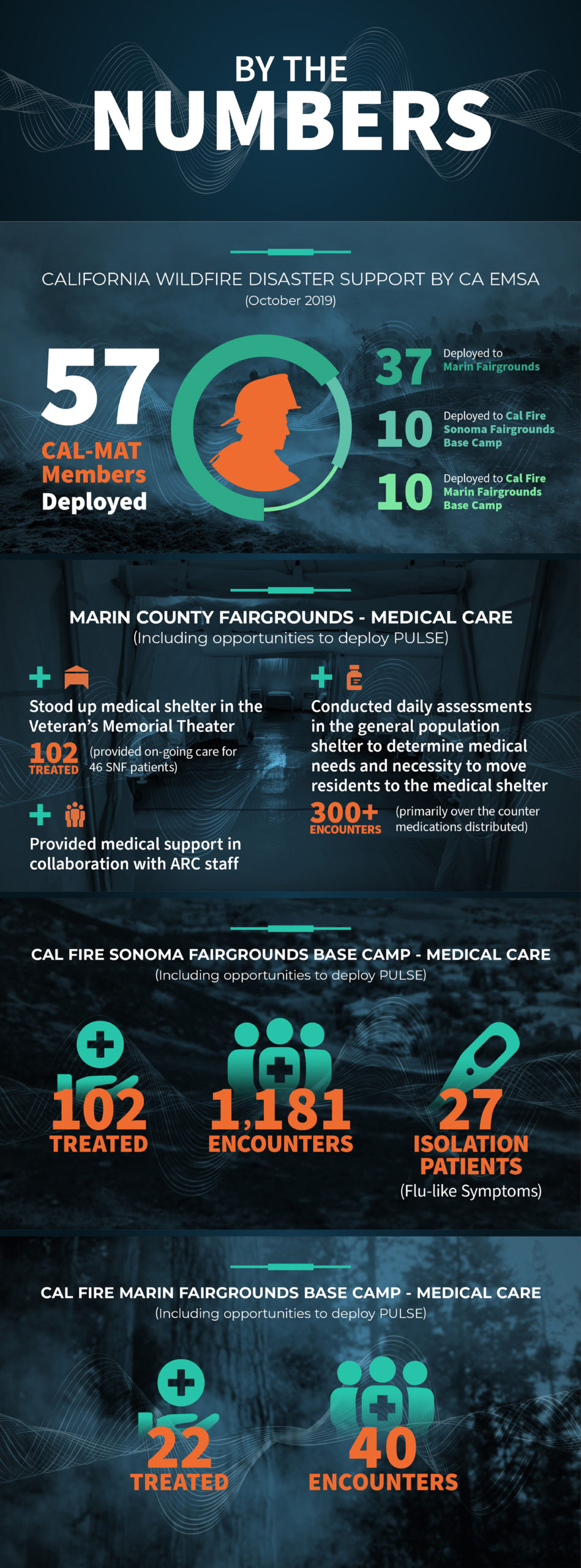PULSE Supports Health Care During Disasters
Rachel Abbey and Leslie Witten-Rood | January 24, 2020
When disaster strikes, most of us think about how we can best protect ourselves and our loved ones. We can’t always think about our health records though. Disasters can often aggravate chronic disease and cause disruptions at hospitals, clinics and other health care and social service facilities. If we even have them, very few of us think about taking our health records when evacuating, but that’s where health IT can help.
Using Health IT During a Disaster
PULSE – the Patient Unified Lookup System for Emergencies – is an electronic health information system designed to help people manage their health care during and right after a disaster. PULSE allows authorized disaster health care volunteers, including first responders, to query and view evacuees’ medical records from all connected health care organizations using nationally recognized standards. In 2015 the Office of the National Coordinator for Health Information Technology (ONC), through a cooperative agreement, collaborated with the California Emergency Medical Services Authority (EMSA) to pilot PULSE in California. PULSE is a health IT disaster response platform that can be deployed at the city, county, or state level.
California is working to increase both the population and percentage of hospitals engaged in health information exchange, which will ultimately increase PULSE’s impact. Today, there are 10 health information organizations (HIOs)[1] that can respond to PULSE in California.
PULSE in Action
During the November 2019 wildfires in California, the EMSA activated and deployed PULSE. Shortly after the system was launched, an individual living with diabetes and high blood pressure was triaged at one of the local disaster recovery centers and was not showing signs of improvement. By accessing the California PULSE system, members of the California Medical Assistance Team (Cal-MAT) and Medical Reserve Corps (MRC) were able to access the patient’s medical history, including their active prescriptions, which were left behind when they had to leave their home.
Within 30 minutes of receiving the PULSE information, treatment was administered and the patient’s health improved.
Value of PULSE at the National Level
California’s use of PULSE has allowed ONC and others to better understand the value PULSE brings to a state’s emergency response effort. ONC continues to work with the Sequoia Project (a non-profit, 501c3, public-private collaborative chartered to advance implementation of secure, interoperable nationwide health information exchange), and other federal partners to facilitate the use of PULSE by other states and localities.
In fall 2019, ONC embarked on a new effort to provide enhancements to PULSE, allowing states to connect to the system easier and faster, and gain access to several nationwide health information systems. Connecting additional states and localities to PULSE will ultimately allow for a more interoperable nationwide health care system for disaster response. This work will ensure that patients will have access to the care they need, wherever and whenever they need it.
Join us at ONC’s 2020 Annual Meeting on January 27 at 4:15 for a session on Health IT and Emergency Preparedness that features PULSE. We’ll also host a PULSE meet-and-greet on January 28 at 3:30 PM. Please come and learn about PULSE and how you can get involved.
[1] Patients have consented to share their data.



